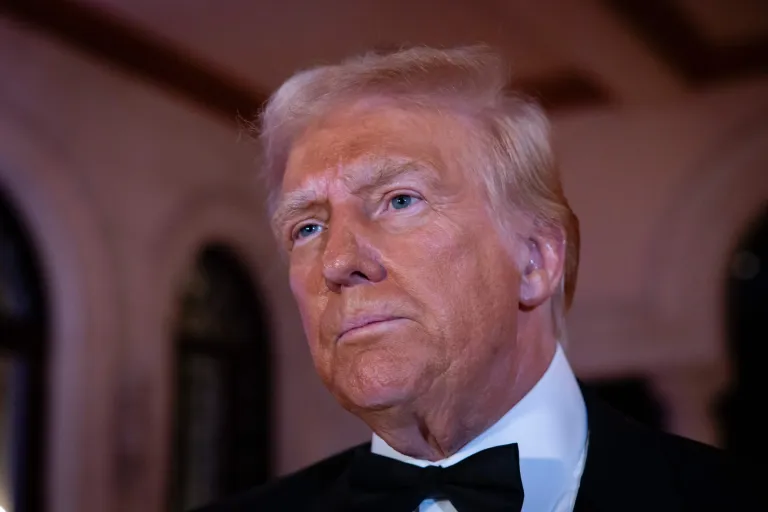
As the 2024 U.S. presidential election campaign heats up, former President Donald Trump is already outlining the framework for his economic policies if he is re-elected, branding them as “Maganomics.” However, economists are expressing growing concern that Trump’s proposed economic agenda could significantly hurt U.S. economic growth in 2025 and beyond. These concerns come amidst predictions of economic uncertainty and an uphill battle to stabilize the country’s financial future.
Trump’s economic platform, centered around tax cuts, deregulation, and an aggressive stance on trade, mirrors many of the policies that characterized his first term in office. While he argues that his approach will ignite economic growth and make America more competitive globally, critics warn that these strategies could exacerbate income inequality, increase federal debt, and place long-term pressure on an already fragile economy.
One of the major pillars of “Maganomics” is a significant reduction in taxes, particularly for corporations and the wealthiest Americans. Trump’s tax cuts are proposed to reduce corporate tax rates even further, aiming to stimulate investment and job creation. While tax cuts may lead to short-term gains for businesses, many economists fear that the long-term effects could prove disastrous.
A primary concern is the strain these cuts would place on the federal deficit. According to several economic analysts, further tax cuts would lead to a dramatic increase in the national debt, which is already at record levels. The Congressional Budget Office (CBO) has projected that under Trump’s proposed plan, the U.S. national debt could increase by trillions of dollars over the next decade, potentially crippling future fiscal flexibility and hindering the country’s ability to invest in infrastructure, healthcare, or education.
Moreover, economists warn that the potential impact of these tax cuts could be limited. While the initial effects may spur some business investment, the gains are likely to be concentrated at the top of the income ladder. Middle and lower-income Americans may not see the same level of benefit, exacerbating the growing wealth gap in the country. Studies have consistently shown that the benefits of tax cuts for the wealthy tend to have limited trickle-down effects, with the rich often using their tax savings for investments that do not directly stimulate broader economic growth.
Another key aspect of Trump’s economic policies is the aggressive deregulation agenda he intends to pursue. Trump has been clear in his desire to roll back environmental regulations and corporate oversight, which he argues stifles economic growth. He suggests that by reducing the regulatory burden on businesses, he will unleash innovation and economic productivity. However, critics argue that deregulation could lead to dangerous consequences, particularly in sectors like healthcare, financial services, and energy.
For example, stripping back environmental protections could lead to a boom in fossil fuel production, but it would also worsen climate change and public health outcomes. Similarly, deregulating financial institutions could lead to risky behaviors that may ignite another financial crisis. Economists argue that regulations exist for a reason: to ensure that businesses operate in a way that benefits society as a whole, not just their bottom lines.
Trade policy under Trump’s second term, often branded as “America First,” is another point of contention. During his first presidency, Trump’s trade war with China created significant economic fallout, with tariffs raising costs for American consumers and straining supply chains. His promised hardline stance on trade, if reintroduced, could invite retaliatory tariffs from trading partners, disrupting global commerce and exacerbating inflation.
While Trump insists that his “America First” policies will prioritize American workers, economists contend that these trade barriers could result in higher prices for everyday goods and slower growth in industries reliant on international trade. The U.S. economy, with its large consumer base, is deeply intertwined with global markets, and isolating it from those markets may ultimately hurt U.S. businesses, particularly in industries like agriculture, technology, and manufacturing.
The bigger question surrounding Trump’s economic agenda is whether it will generate sustainable, long-term growth or whether it will lead to a boom-and-bust cycle reminiscent of the pre-2008 financial crisis years. Economic models predict that such an approach could lead to short-term gains in employment, but the long-term effects could result in stagnation and even recession, especially if the government becomes overwhelmed by debt obligations.
The overall uncertainty surrounding “Maganomics” is also tied to the unpredictability of Trump’s leadership style. Critics argue that his tendency to favor populist rhetoric and engage in divisive rhetoric could destabilize the political landscape, leading to increased volatility in both domestic and international markets. The potential for increased political gridlock, especially if the White House faces opposition from Congress, could further dampen economic confidence, making it difficult to achieve meaningful legislative reforms.
Ultimately, the economic policies Trump has proposed will play a pivotal role in shaping the trajectory of the U.S. economy in 2025 and beyond. The debate over the efficacy of “Maganomics” will only intensify as the election approaches, with economists warning that a return to the former president’s economic policies could be a risky proposition. As the U.S. faces the long-term consequences of the pandemic and seeks to recover from global economic disruptions, Trump’s proposals could either lay the groundwork for sustained growth—or set the stage for a financial crisis. Only time will tell which path the country will take.





